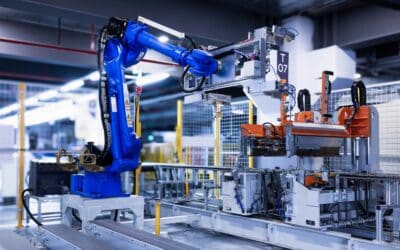Compared to line scan cameras, area scan cameras offer a wider range of applications for industrial machine vision. Nevertheless, there is a persistent opinion that area scan cameras are fundamentally more prone to errors. We show why this does not always reflect reality.
A rectangular recording surface for image information – even the first pinhole camera worked in this sense with an area scan. The decisive feature of the area scan camera is its two-dimensional recording medium with pixels in rows and columns. This matrix allows a likewise two-dimensional image with only one recording.
From CCD sensor to CMOS
These scenes are captured on a sensor. The days of a fixed aspect ratio of 4:3 are over – today’s sensors are also available in other formats such as 16:9. Unlike line scan cameras, area scan cameras offer an additional choice of sensor: either a CCD or a CMOS sensor is possible. Both were originally developed in the 1960s.
CCD represented the state-of-the-art in image capture for a long time. This type of sensor consists of a silicon chip with an array of photodiodes. Thus, CCD sensors are basically classified as analog. However, it is easily possible to adapt this output signal with a downstream analog-to-digital converter (ADC).
CCD sensors convince by high light sensitivity and pixel accuracy. On the other hand, the analog process is slow and at risk of blooming due to its recording method: In particularly bright areas, the individual photodiodes trigger very strongly. This, in turn, is transferred to neighboring diodes, so that these also appear bright in the image – the image is smudged in the bright areas.
In contrast, CMOS sensors did not become widely accepted until the 1990s. In this approach, the respective charge of the light-sensitive pixels is converted directly into voltage. Each of these signals, in turn, is read out by the ADC integrated in the sensor, resulting in a digital image without any detours.
However, this higher speed and smaller size of the CMOS sensor comes at the price of a loss of space on the sensor, because the ADC must now also be placed there. For a long time, this reduced the overall sensitivity of the sensor. Modern processes can compensate for this (almost) completely. Due to their design, CMOS sensors are not susceptible to blooming – edges can be precisely detected with them, for example.
It is precisely due to the further developments of recent years, the increasing time pressure and the growing need for digital solutions that CMOS has become the sensor solution of choice for area scan cameras.
How can this be used in practice?
Area scan cameras capture the objects and scenes in front of them in a single shot. Unlike line scan cameras, they do not require an object or assembly line to pass by the camera. As a result, and due to the ease of implementation and calibration, area scan cameras incur significantly lower machine vision costs. The area scan concept can also be used and installed in more scenarios than a line scan camera, which always requires a special setup.
The latter, on the other hand, copes better with moving parts than an area scan camera: while the line scan camera simply takes images of the currently visible section at the appropriate speed, its counterpart has only two options:
- To allow for and accept a slight smearing of the parts. Rarely is the shot fast enough to fully eliminate the movement in this period already. It is true that these smearing effects are often not visible to the naked eye. But smearing of up to 2 pixels leads to inaccurate results, especially in measurements.
- Improve the lighting situation for imaging. With additional lighting panels, shorter exposure times are possible – smearing decreases.
Depending on the application purpose, it is recommended to adjust the setup accordingly. The resolution is also individual. Depending on the sensor used, this can range from low to high resolution. Compared to the line scan camera, the area scan camera comes up trumps with greater adaptability and individuality. There is also no need for complex and precise calibration. In this case, the line scan camera requires time-consuming adjustment so that the images can be correctly stitched together. Their high flexibility thus makes area scan cameras an image processing all-rounder.
Unlimited possibilities?
However, the method reaches its limits with fast-moving objects. This is when smearing occurs. But oversize is also a problem for area scan cameras: Either the camera records only sections of the object or the distance to the object must be increased. This can be at the expense of image quality. A line scan camera, on the other hand, can fully exploit its advantages here.
So are area scan cameras ultimately not all-rounders suitable for industrial use? Certainly they are! After all, they can be used for a wide range of image processing applications with good quality. Ultimately, however, area scan cameras are like all all-rounders: If you can do everything, you cannot be excellent in every single area. For individual special cases, line scan cameras can be a good substitute.



